calsfoundation@cals.org
Searcy (White County)
County Seat
| Latitude and Longitude: | 35º14’58″N 91º44’11″W |
| Elevation: | 264 feet |
| Area: | 18.32 square miles (2020 Census) |
| Population: | 22,937 (2020 Census) |
| Incorporation Date: | August 6, 1851 |
Historical Population as per the U.S. Census:
|
1810 |
1820 |
1830 |
1840 |
1850 |
1860 |
1870 |
1880 |
1890 |
1900 |
|
– |
– |
– |
– |
– |
– |
874 |
840 |
1,203 |
1,995 |
|
1910 |
1920 |
1930 |
1940 |
1950 |
1960 |
1970 |
1980 |
1990 |
2000 |
|
2,331 |
2,836 |
3,387 |
3,670 |
6,024 |
7,272 |
9,040 |
13,612 |
15,180 |
18,928 |
|
2010 |
2020 |
|
|
|
|
|
|
|
|
|
22,858 |
22,937 |
|
|
|
|
|
|
|
Searcy has been the White County seat since the county’s organization in 1835. Located on the Little Red River near the county’s geographic center, the city continues to be the county’s commercial, educational, and healthcare center.
Louisiana Purchase through Early Statehood
The Little Red River and the White Sulphur Springs figure in Searcy’s founding. On the west bank of the Little Red, below the mouth of Gin Creek, a Spanish land grant was surveyed for Frenchman Jean LaFayac (LaBass) and patented to him in 1805. By 1834, the White Sulphur Springs, developed by Samson Gray, were attracting visitors with their healing properties. The home of David Crise, about halfway between the springs and the river, was the site of the first county court, held on May 23, 1836. The first post office, Frankfort, was established in 1837, with Ephraim W. Guthrie as postmaster. In 1838, the name was changed to Searcy, and John W. Bond became postmaster. Searcy was named for Richard Searcy, a transplanted Tennessean who had served as judge in the Superior Court of Arkansas Territory.
Initial development was slowed because of a dispute over ownership of the town site. The U.S. Supreme Court settled the case, and in 1850 Israel Merrick Moore, a Pennsylvania Quaker, surveyed the town site and named the streets as named in Philadelphia. He donated land for churches, Spring Park, and the court square. Businesses developed and private schools were started. The White County court incorporated Searcy on August 6, 1851.
Civil War through Reconstruction
Searcy’s growth was interrupted again by the Civil War. Jesse N. Cypert, the county’s representative to the Secession Convention, was elected as an anti-secessionist, but with the attack on Fort Sumter sentiment changed, and Cypert voted for secession. Eight companies of men were raised locally, and Dandridge McRae became the only Confederate general from White County. In May 1862, under the command of General Samuel R. Curtis, numerous expeditions were sent out in search of supplies and information. Union soldiers camped across the Little Red River east of Searcy crossed the river and, while foraging, were attacked in the Action at Whitney’s Lane by Texas Rangers, led by Major Emory Rogers, and the local militia. It was the largest military engagement in White County, resulting in fifty-five Union soldiers dead and four Confederate casualties, and it thwarted Curtis’s drive toward Little Rock (Pulaski County). Several days later, General Eugene Carr’s Searcy Expedition resulted in two Confederate wounded and one Confederate captured, and another group of Union troops under General Curtis, nine miles northwest of Searcy, fought in the Skirmish at Big Indian Creek, resulting in one Union soldier killed and twenty-three Confederate casualties.
Searcy again saw action in August 1863, when the Union gunboat Cricket steamed up the Little Red and captured the Confederate steamboats Kaskaskia and Tom Sugg at Searcy Landing. This action was part of General Frederick Steele’s campaign to capture Little Rock. In May 1864, there was an Affair at Searcy, followed by a Skirmish near Searcy in August and another Skirmish near Searcy in September.
Searcy was slow in recovering from the war. The Ku Klux Klan (KKK) was active in Searcy in 1868, resulting in the murder of Albert Parker, a secret agent of Governor Powell Clayton. Searcy was rebuilding by the 1870s, as illustrated by the erection of the White County Courthouse and the First Methodist Church, landmarks that still stand.
In 1872, the Cairo and Fulton Railroad was built across the county, bypassing Searcy for more level terrain. Realizing the railroad’s importance, leading citizens organized the Searcy Branch Railroad Company to connect Searcy with the new town of Kensett (White County) on the Cairo and Fulton.
Post-Reconstruction through Early Twentieth Century
The 1870s also saw the revival of the White Sulphur Springs as a health resort. Economically, the area also depended on cotton, the harvesting of hardwood timber with attendant mills, and farming with an emphasis on raising strawberries. In 1885, James J. Baugh purchased the Des Arc Citizen newspaper, and four years later, he moved its operations to Searcy under the name White County Citizen; it was later renamed the Daily Citizen. In the early 1900s, Searcy also benefited from the arrival of the Chicago, Rock Island & Pacific and the Missouri & North Arkansas railroads. Both hauled produce, especially timber and cotton. A Searcy firm, Owens Brothers, claimed it was the largest supplier of mules to the army during World War I. The White Sulphur Springs ceased flowing in the 1920s.
The programs of the New Deal reached Searcy: the Works Progress Administration (WPA) built a city hall and the American Legion Hut. Ray Yarnell started Yarnell’s Ice Cream Company in 1933. The strawberry harvest was the major cash crop of the Depression years, though later a dearth in pickers and drought in 1953–54 ended White County’s reign as strawberry king. But shrewd management and exceptional quality enabled Yarnell’s to survive the hard times.
World War II through the Faubus Era
By March 1942, Searcy was committed to the war effort, with 152 of its young men in the military. Rationing, collecting scrap metal, buying war bonds, and saving grease were examples of the community’s support.
Searcy experienced steady growth after World War II, even though the two railroads fell victim to the postwar boom in automobiles, air travel, and modern trucking and finally went bankrupt. Businessmen led a concerted effort to attract industry. The first factory to arrive was the International Shoe Company of St. Louis, Missouri, which started production in 1947. Other industries followed, giving Searcy a diverse economic base of industry, agriculture, government services, education, and healthcare.
Education
Private educational opportunities have been available since 1849, when the Polytechnic Institute of Searcy was founded by A. M. Rafter. During the late 1800s, the Searcy Male Academy and the Searcy Female Academy taught a generation of scholars, before giving way to Searcy public schools. Galloway Female College, sponsored by the Arkansas Methodist Episcopal Church, South, was chartered in 1888. Galloway closed in 1933. The campus was bought by Harding College (now Harding University), a Church of Christ–supported college established in Morrilton (Conway County) in 1924. Harding is the state’s largest private university, with 5,348 students representing all fifty states and several foreign countries. In 1966, Foothills Vocational-Technical School began accepting students; in 2003, it became the Searcy campus of Arkansas State University.
The Searcy public school system was established in 1870. Searcy High School is a member of the North Central Accreditation Association, having become a charter member in 1924.
Industry
Searcy’s industries started with tanneries, cotton gins, sawmills, and flourmills. Agriculture has continued in importance, with timber, rice, soybeans, cattle, poultry, corn, and winter wheat all having an impact on the local economy. Other industries include suppliers of parts for vehicles and household appliances. In addition, Searcy has two distribution warehouses for Walmart Inc. Yarnell’s is based in Searcy, as is First Security Bank.
Attractions
The White County Fair, held annually since 1930, is the largest county fair in Arkansas, with over 50,000 attending annually. The Searcy Art Gallery is in the Benjamin Clayton Black House, a restored 1870s Italianate house now on the National Register. Another National Register property is the White County Courthouse, which is the oldest functioning courthouse in Arkansas. The Events Center includes an outdoor sports complex and Pioneer Village, a re-created 1880s settlement. The historic Spring Park is part of a system that includes Berryhill, Yancey, and Riverside parks; all offer recreation facilities, picnic areas, and green space.
Famous Residents
Searcy has many famous former residents. Dandridge McRae (1829–1899), a native of Alabama, came to White County in 1849. In 1862, he was promoted to brigadier general and participated in the Battle of Helena. He also led Confederate forces during the Red River campaign. He is buried in Oak Grove Cemetery.
Stephen Brundidge Jr. (1857–1938) was elected to Congress in 1897 and served twelve years. He is buried in Oak Grove Cemetery.
John Elvis Miller (1888–1981), a native Missourian, graduated with a law degree from the University of Kentucky. In 1912, he began to practice law in Searcy. He served in the U.S. Congress from 1931 to 1937, resigning to become a senator after the death of Senator Joseph T. Robinson. Miller resigned from the U.S. Senate in 1941 to take an appointment as district judge for the Western District of Arkansas. He is buried at Forest Park Cemetery in Fort Smith (Sebastian County).
Preacher Roe, a famous baseball pitcher in the 1940s and 1950s, attended Harding College on a baseball scholarship. Country musician Bonnie Montgomery was born in Searcy and developed an interest in music at her mother’s Quattlebaum Music Shop. Leon Johnson, the second African American to hold an executive branch constitutional office in Arkansas (having been appointed attorney general during a vacancy) was born in Searcy and graduated from Harding University.
For additional information:
Akridge, Scott H., and Emmett E. Powers. A Severe and Bloody Fight: The Battle of Whitney’s Lane & Military Occupation of White County, Arkansas, May & June, 1862. Searcy, AR: White County Historical Museum, 1996.
Boyles, Carollyn, and Patsy Pipkin. Searcy. Mount Pleasant, SC: Arcadia Publishing, 2012.
Johnson, Claude. The Humorous History of White County, Arkansas. Searcy, AR:1975.
Muncy, Raymond Lee. Searcy, Arkansas: A Frontier Town Grows Up With America. Searcy, AR: Harding Press, 1976.
Strother, A. P., Sr. Searcy Centennial, 1837–1937. Searcy, AR: 1936.
Trimble, Mike. “Searcy: A Portrait of an Arkansas Town.” Arkansas Times, July 1986, pp. 42–46, 58, 60–65.
White County Historical Society. http://www.whitecounty.us (accessed August 16, 2023).
William E. Leach
White County Historical Society
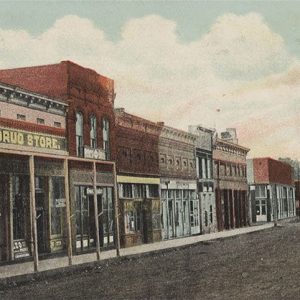
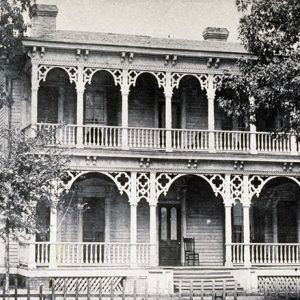
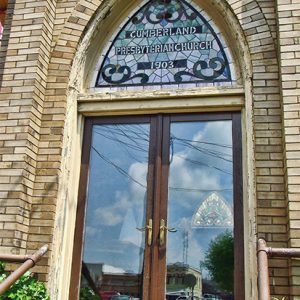
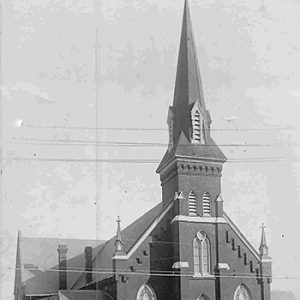
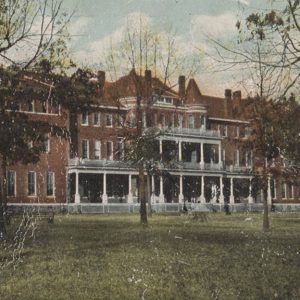
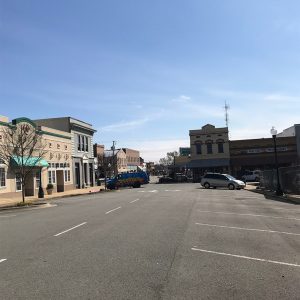
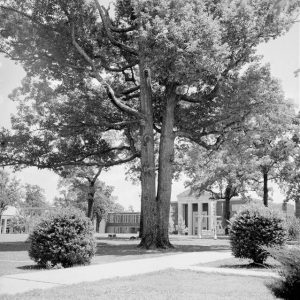
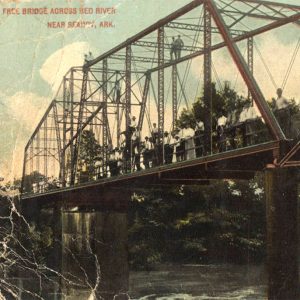
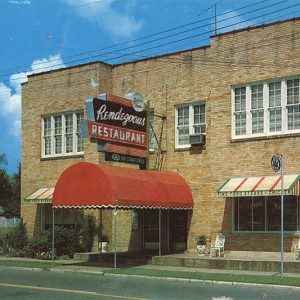
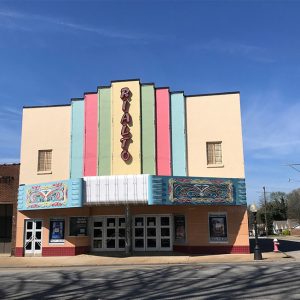
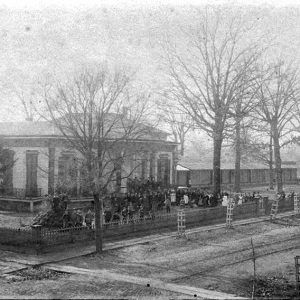
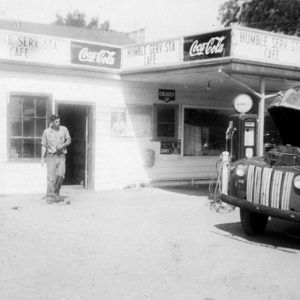
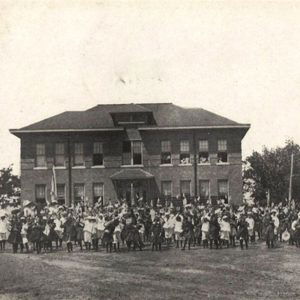
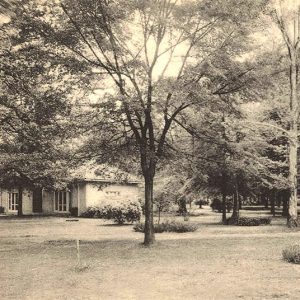
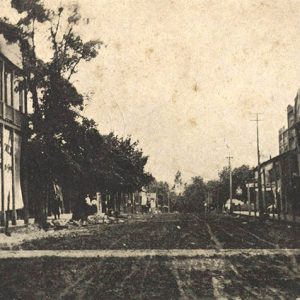
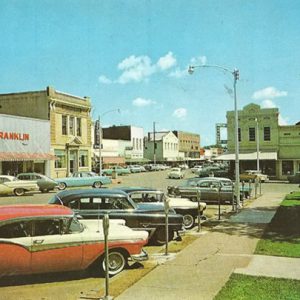
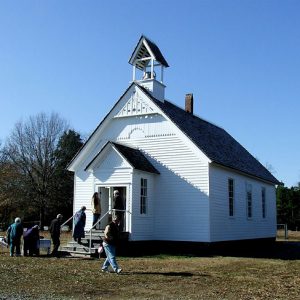
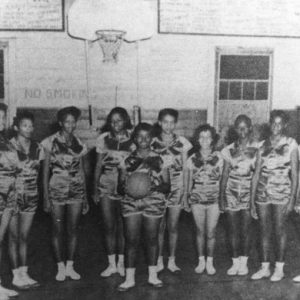
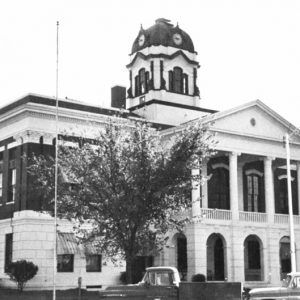
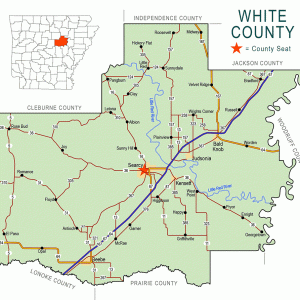
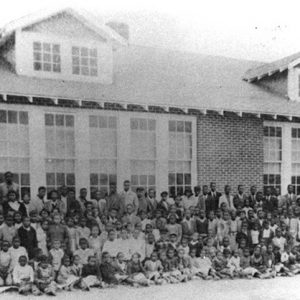

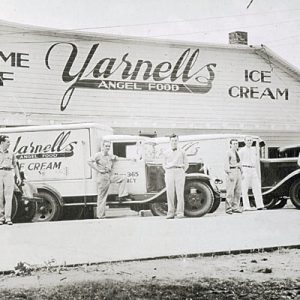
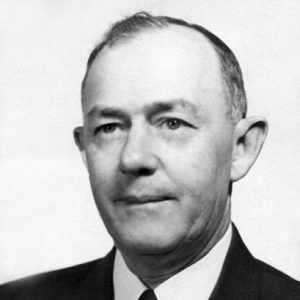




The Owens Brothers’ mule operation was succeeded by a son, Hazz Owens, and partner Coleman (Cole) Liles (1893-1943) from their barn on South Spruce Street, supplying thousands of mules for World War II. They shipped truckloads of forty to seventy-five head of mules to Texarkana, Memphis, Kansas City, and St. Louis. The barn stood intact as part of the Yarnell’s campus until September 2024. Lumber and foundation stones are now cared for by Cole Liles’s grandson, Dr. Michael Liles, in Searcy.
Sources for this information are Cole Liles’s mule barn ledgers (1942-1943), personal letters from Cole Liles (1920), photos of mule barn 2020-2022, and personal information from Cole’s eldest son, Ton Liles (1916-1999).